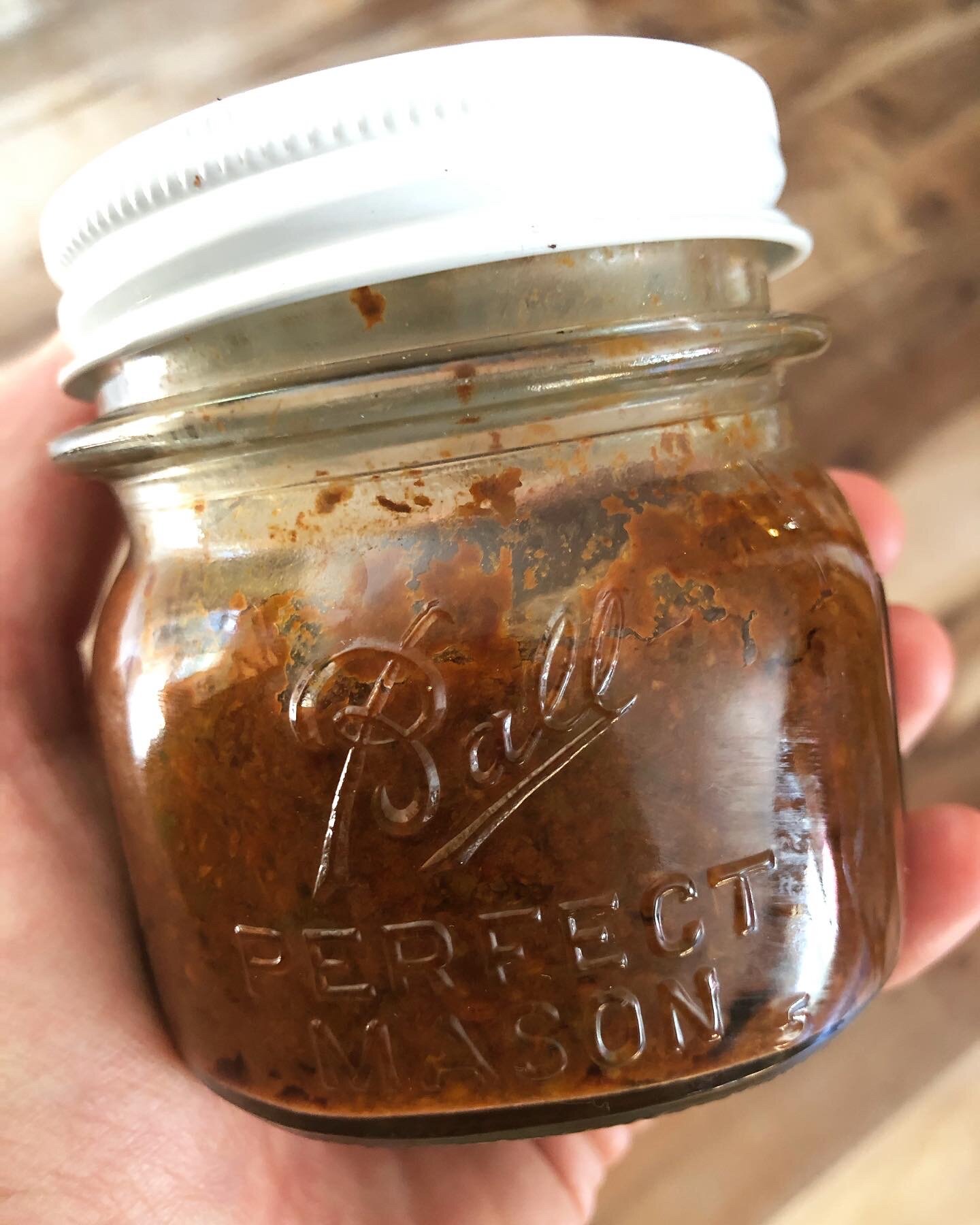How to know when old ferments are still good? That is a question many of ask when we find a jar we didn’t remember we had. Lost and found ferments are real. We all have ferments that slip quietly to the back of the fridge where they get forgotten. In the spirit of full utilization and not wasting food I want to help you figure out what is still good (and maybe even tastier!) and what should be thrown out.
How a ferment ages depends very much on what kind it is. The original ingredients will determine a lot about its longevity. Miso and other bean ferments generally keep aging and layering on flavor. These may have a layer of mold growing on them but underneath they are still safe. Vegetables are quite variable in that they can still be technically “good” but no longer vibrant. I find a sauerkraut that is over a year old is generally of this ilk. Whereas a chile pepper based ferment has compounds in it that give it years of delicious longevity. Check the last post about creating hot sauce from old fermented pepper pastes. I also find herbal ferments like basil or shiso have a much longer lifespan do to the constituents that make these herbs antimicrobial. To learn more about fermentation methods head to Fermentation School.
This fermented Thai Red Curry Paste is an example of a ferment that had both antimicrobial preservation ingredients and chiles. I found it recently in the recesses of the fridge. It was made in 2015. To be fair, not the daily fridge, one of the ferment fridges where things get “lost and found” often. This recipe is from Fiery Ferments and took inspiration from one of our favorite flavors and lacto-fermented it. Early in the ferment it doesn’t taste as good, it gets better with age.As the fermentation continued, the flavors blended and created a pleasing complex red curry flavor. So hence making it and putting it away for 6 months, um or 5 years. What do you do? Make curry. Below is the recipe for your enjoyment, go ahead hide it in the back of the fridge after it has fermented to discover later.
To evaluate your old ferment for “good” you will use your senses and trust your gut. Properly fermented the pH will have been below 4.0 this ensures that harmful bacteria will not live in the ferment. (You can test with a pH meter or test strips.) You will also know because it will be pleasingly acid — think pickles. If the ferment is still anaerobic (under the brine and no airpockets) then it is also a good sign. There may be yeast, even mold on top but that can be removed. As long as it is just on top and the rest is anaerobic it is fine. Then of course there is smell, does it still smell fine—not foul, putrid, musty or off? If so you can move to a small taste, this will give you a lot of information. It should taste fine. If it does not, then it is not.
RECIPE FOR FERMENTED THAI RED CURRY PASTE
Thai pastes are traditionally ground together with a mortar and pestle. We mention this because there is a texture difference: the fibers of lemongrass and roots don’t break down as much in a food processor, though the flavor will still be delicious.
3 tablespoons fresh lemongrass, chopped
1 medium shallot, or 4 tablespoons, chopped
9–10 diced Thai type small red chiles, deseeded, soaked, and drained
1/3 cup loosely packed cilantro, chopped, with root when possible
8 medium cloves garlic
2 tablespoons galangal, grated
1–2 kaffir limes (also called makrut limes,substitute regular limes if unavailable)
1/2 tablespoon kaffir lime zest (take care not to zest the bitter pith)
2 teaspoons kaffir lime juice
1 1/2 teaspoons salt
1. Process all the ingredients to a paste consistency in a food processor. Sprinkle in the salt. It will become juicy immediately.
2. Pack the paste into a jar that is just the right size for your ferment, leaving at least an inch of headspace, release any air pockets as you press it in. The thick brine will be hard to distinguish from the rest of the paste.
3. Press a piece of parchment paper (or other cartouche) against the surface, being careful not to trap any air beneath it. Screw the lid down tightly.
4. Put the ferment in a corner of the kitchen to cure, and watch for air pockets forming in the paste. If you see them, open the lid and press the paste back down. If the lid starts to bulge, simply open it for a moment to “burp” the ferment.


















